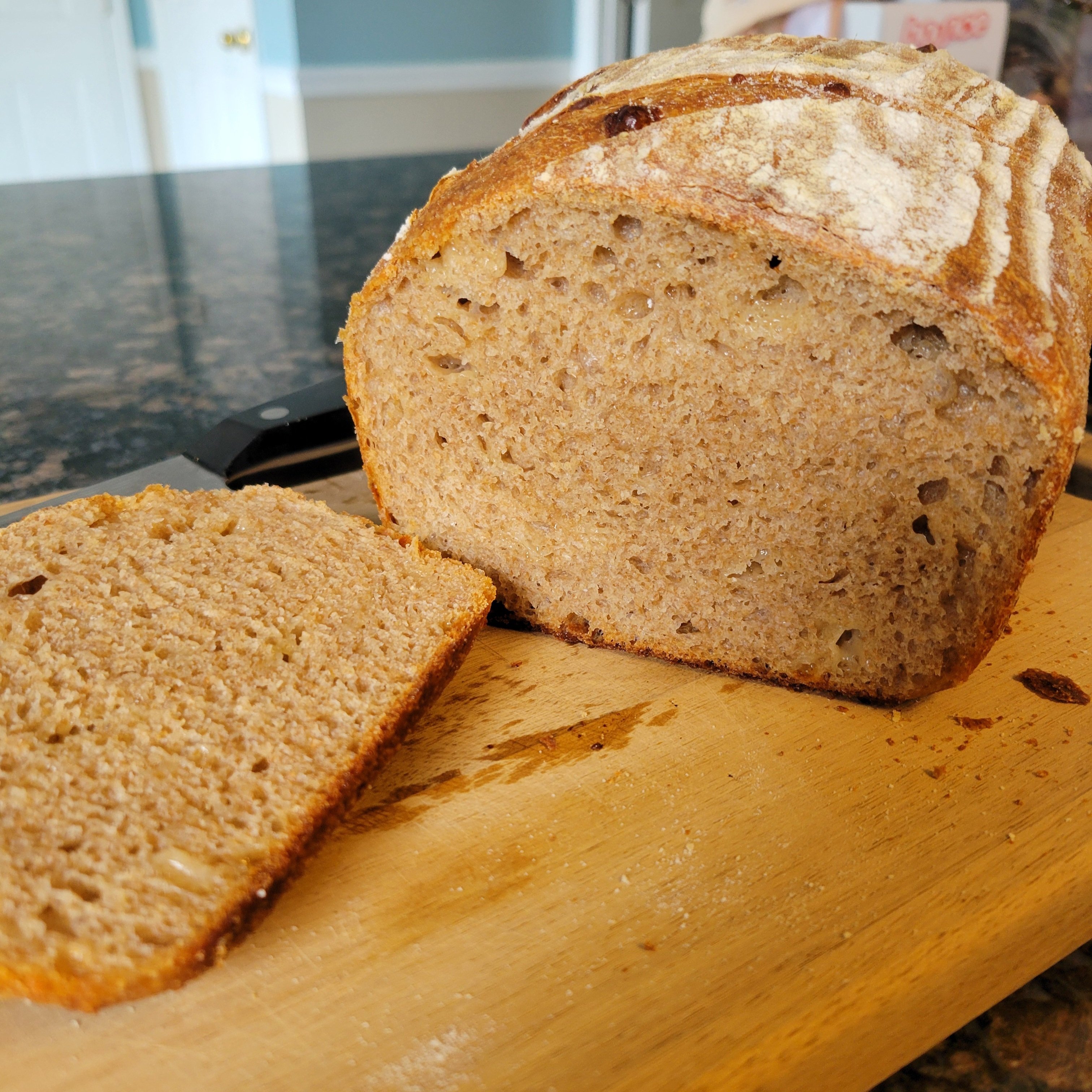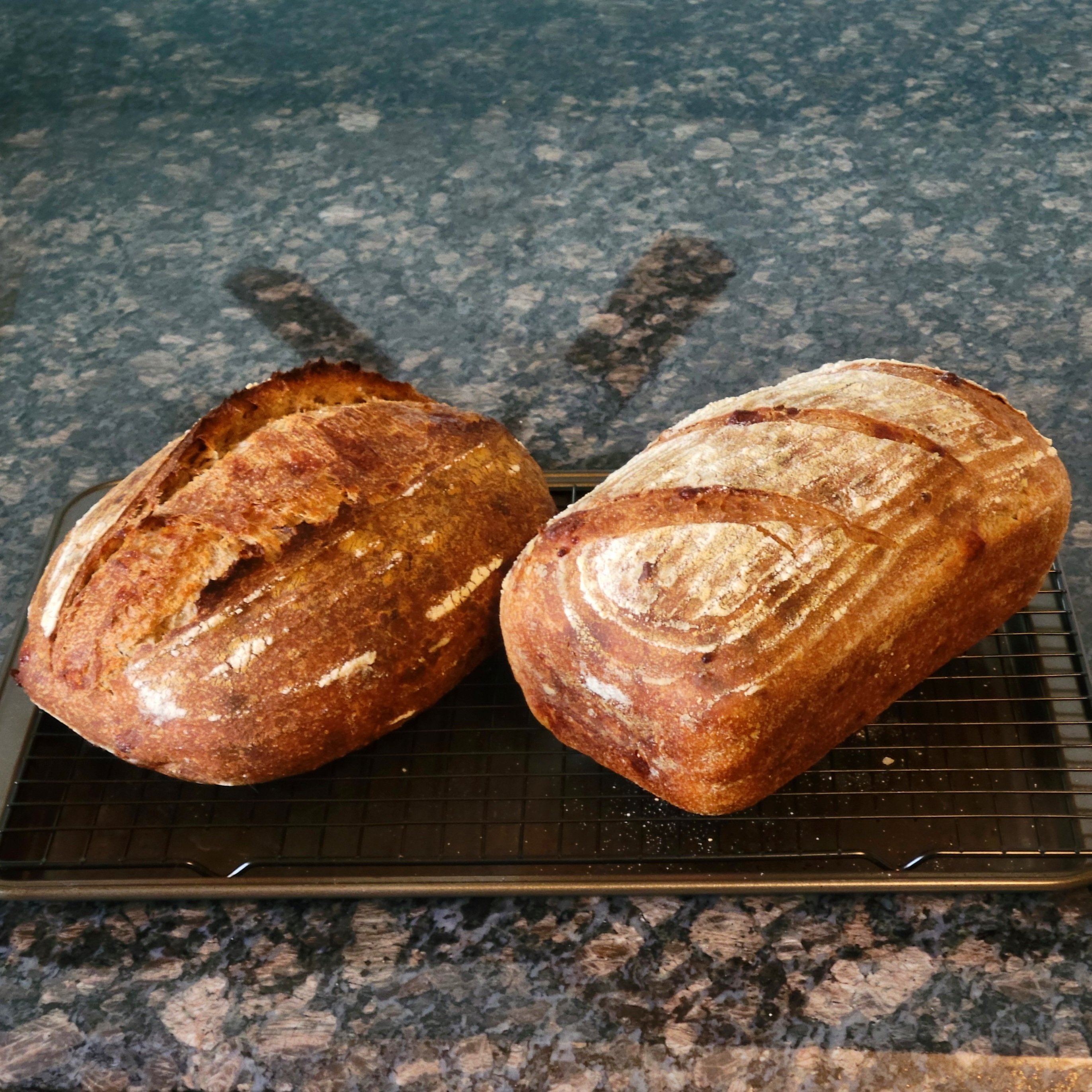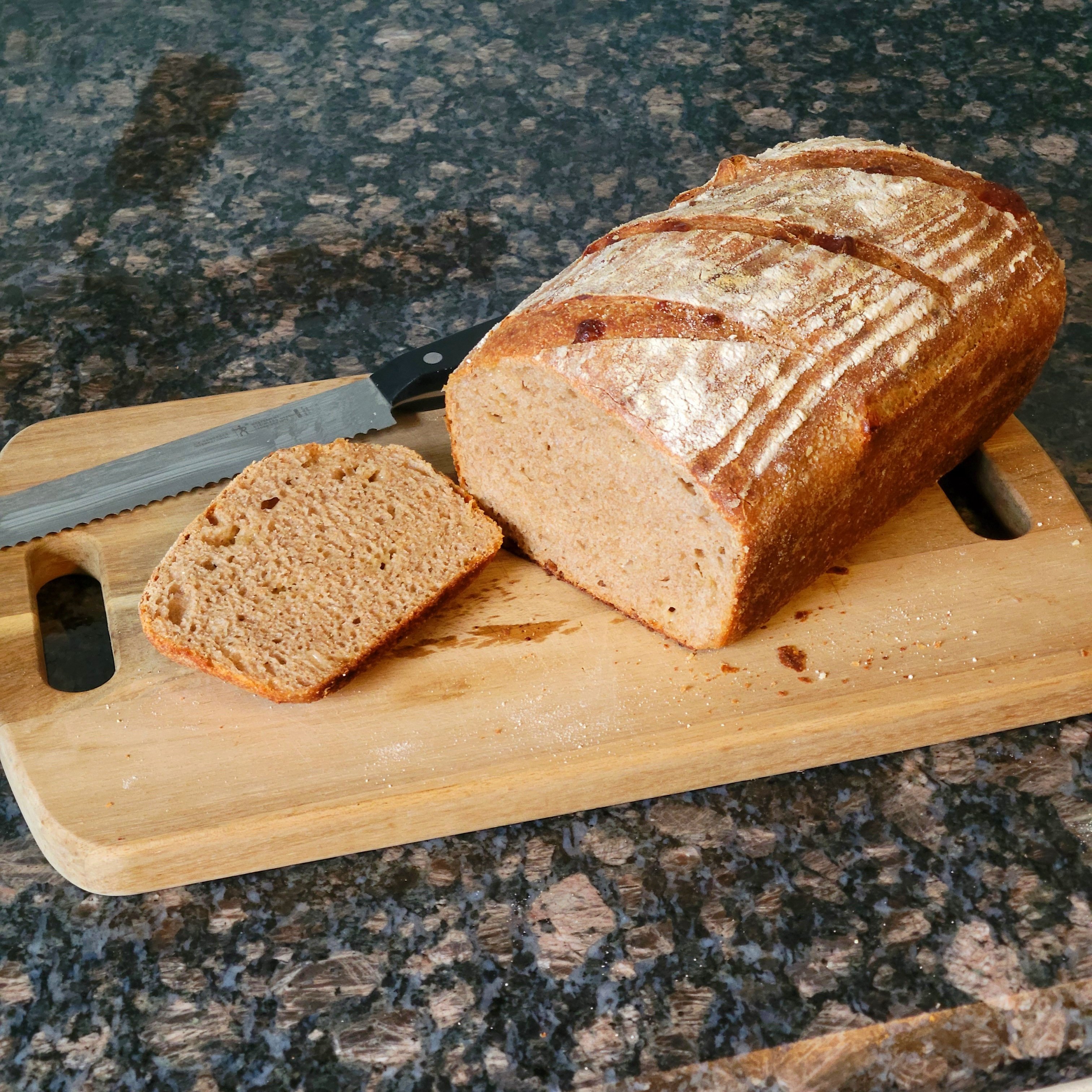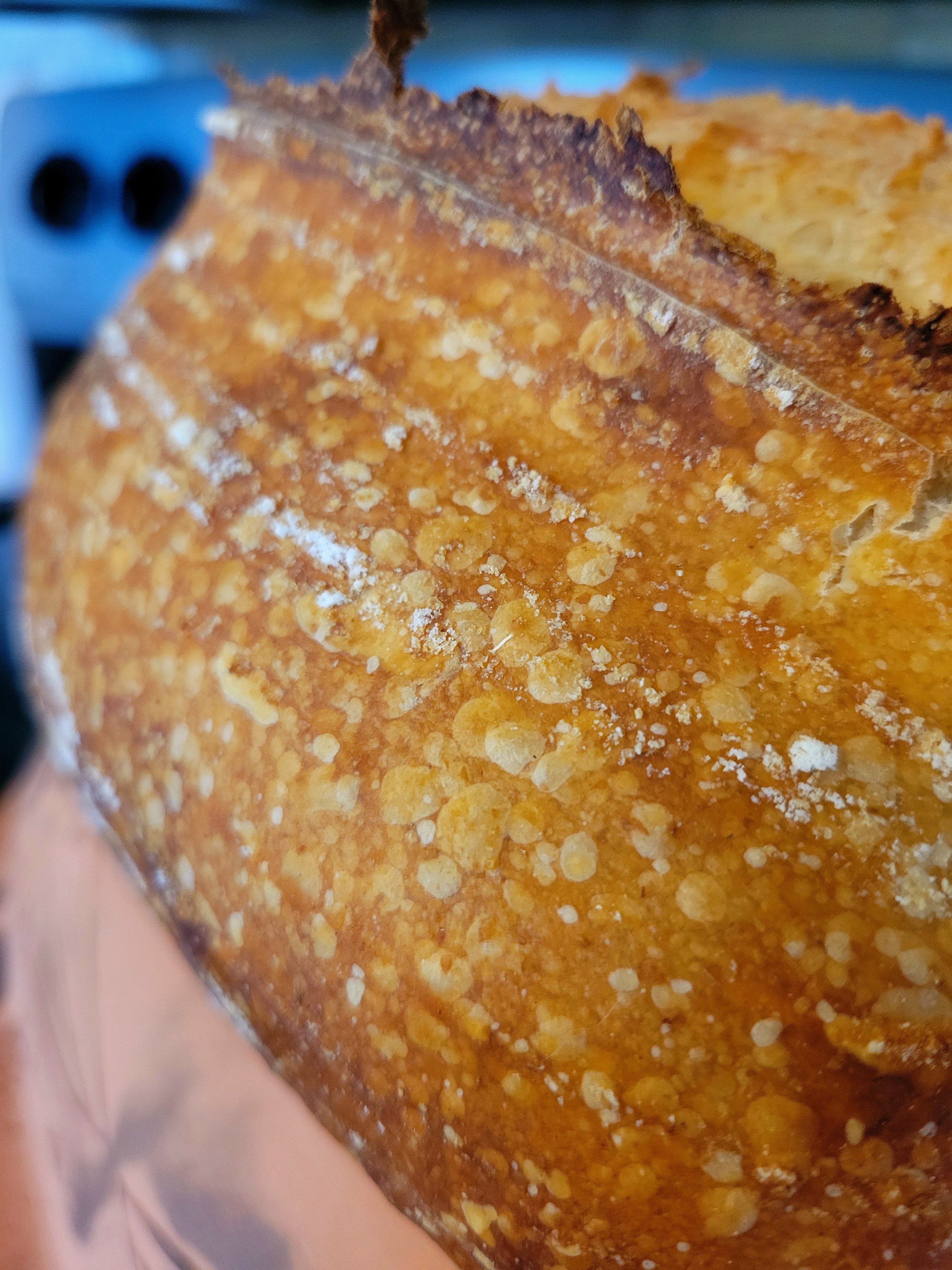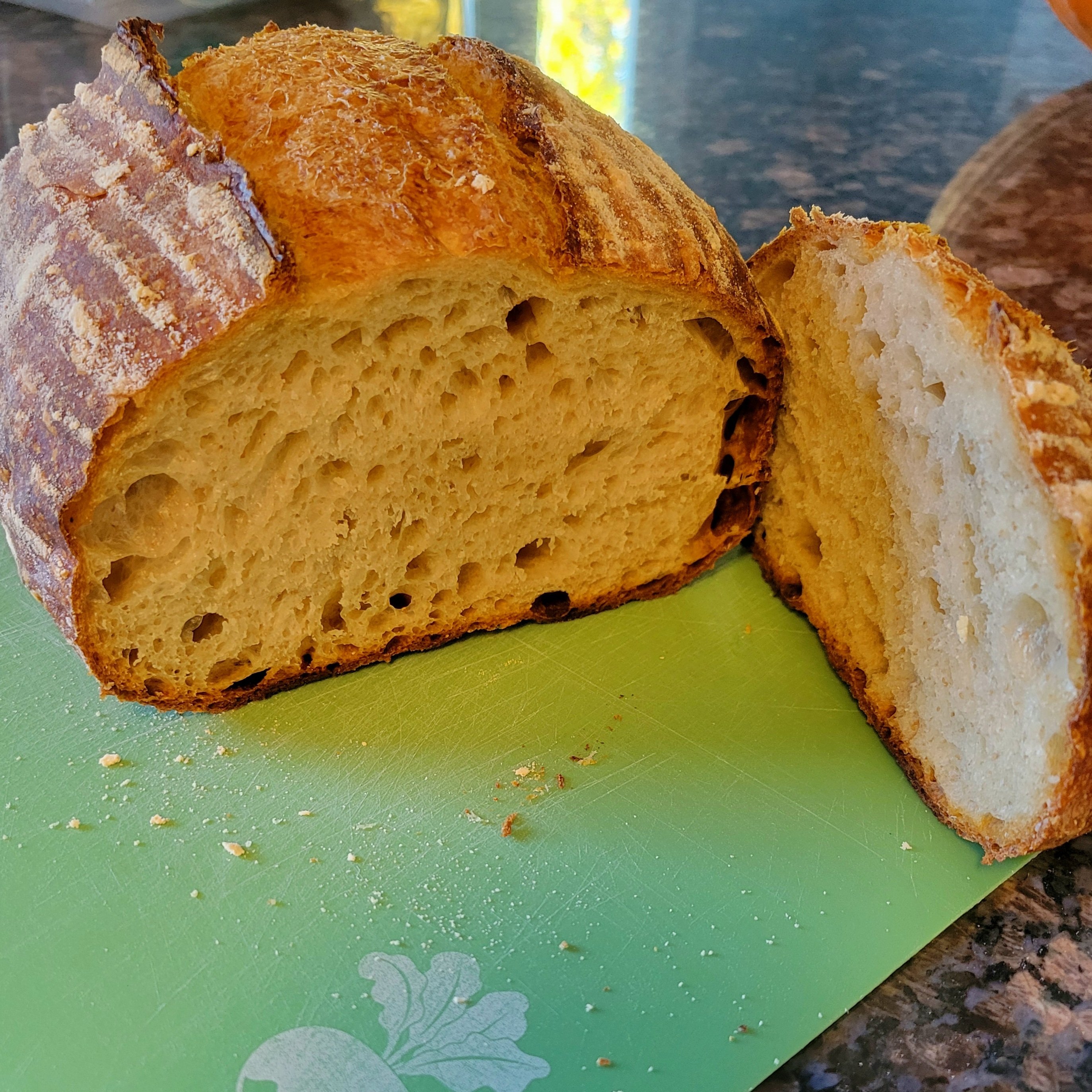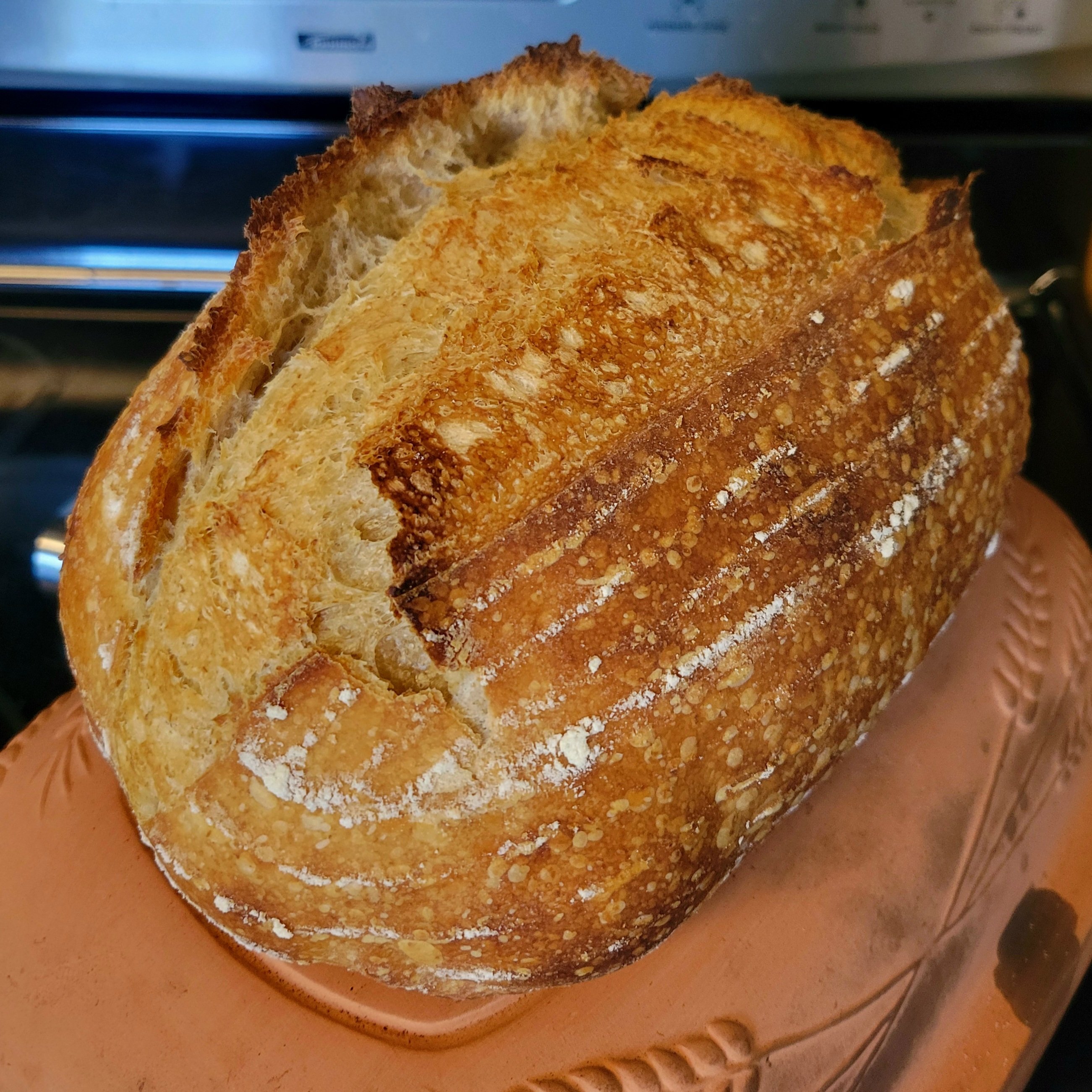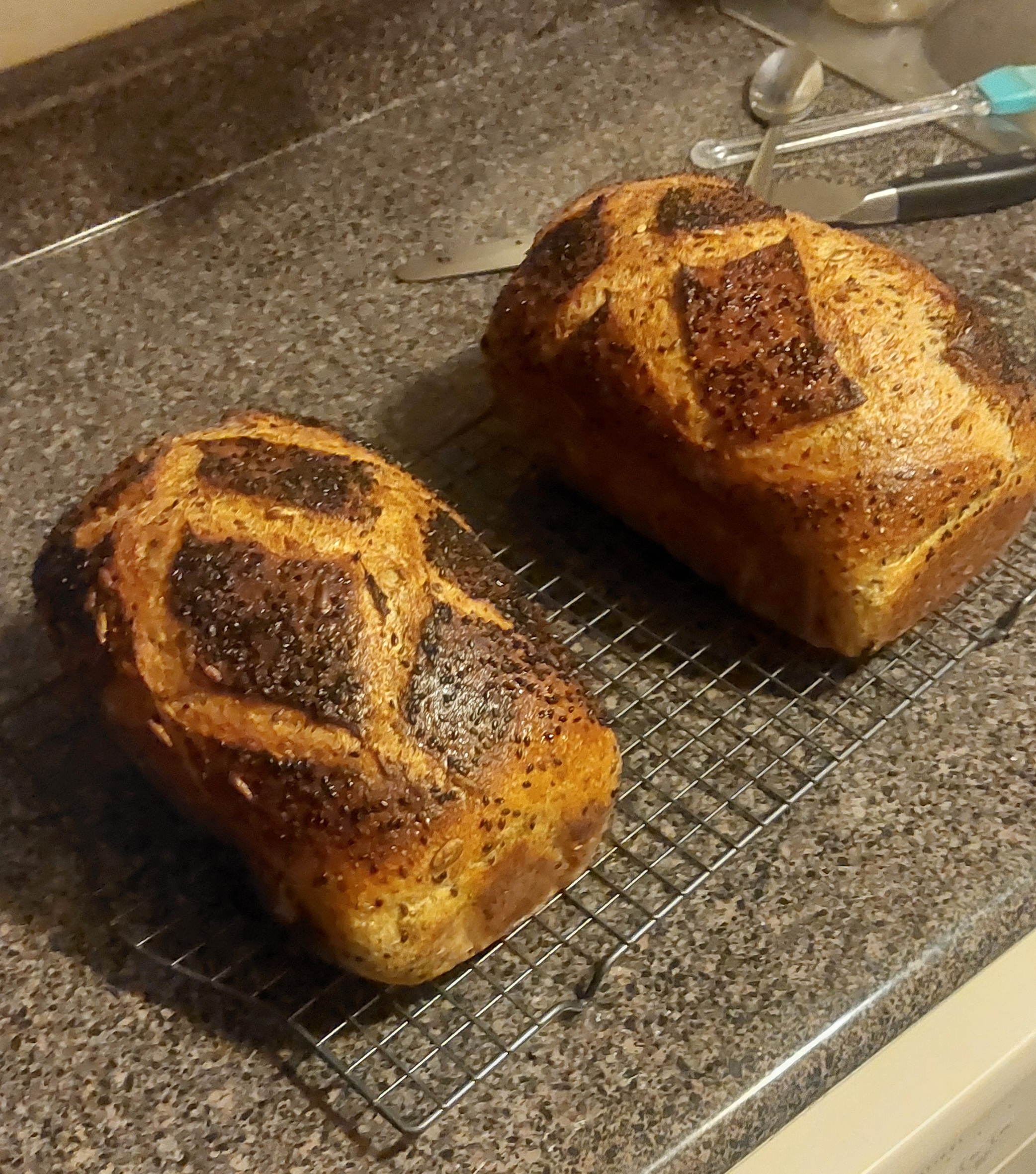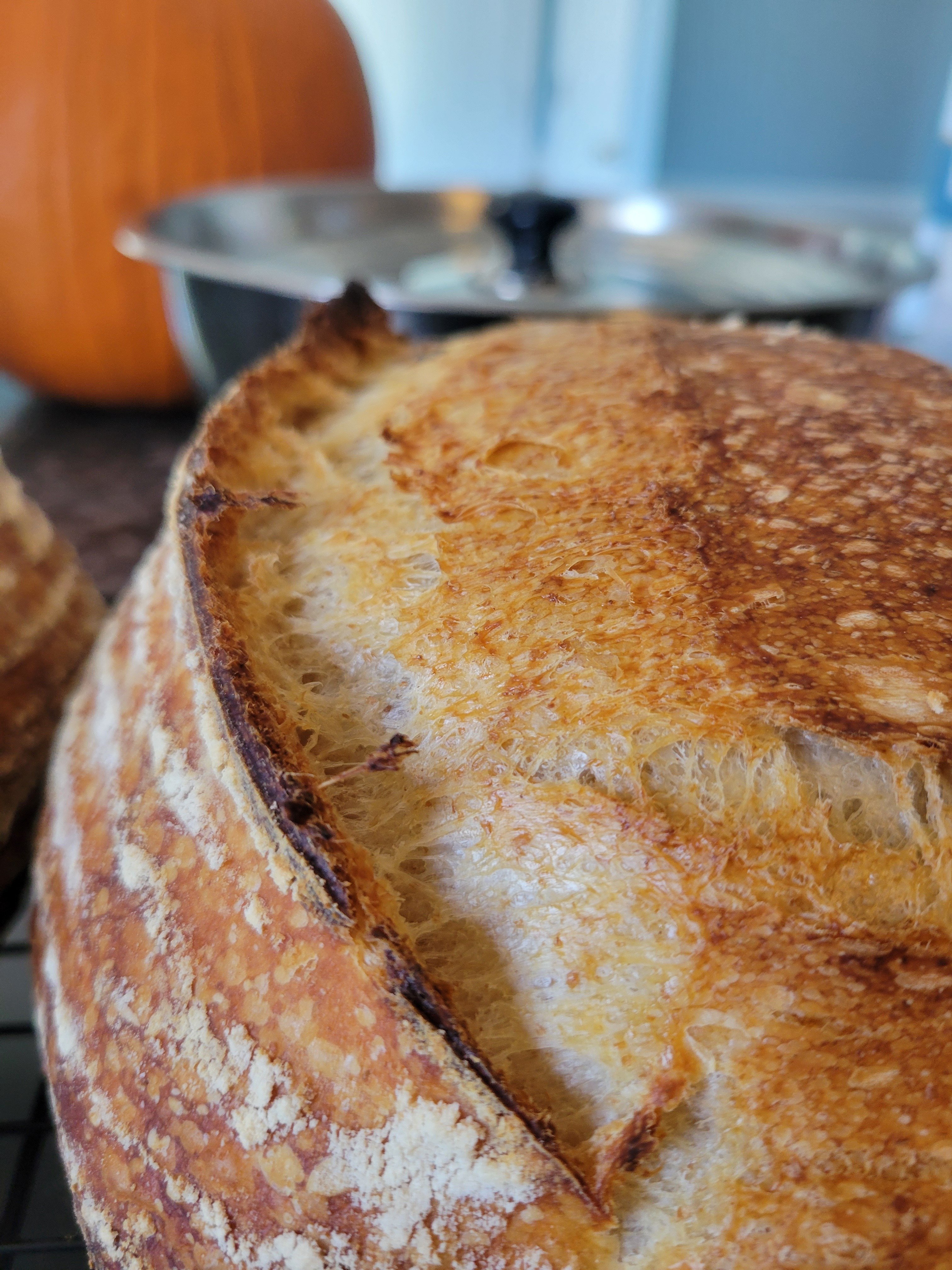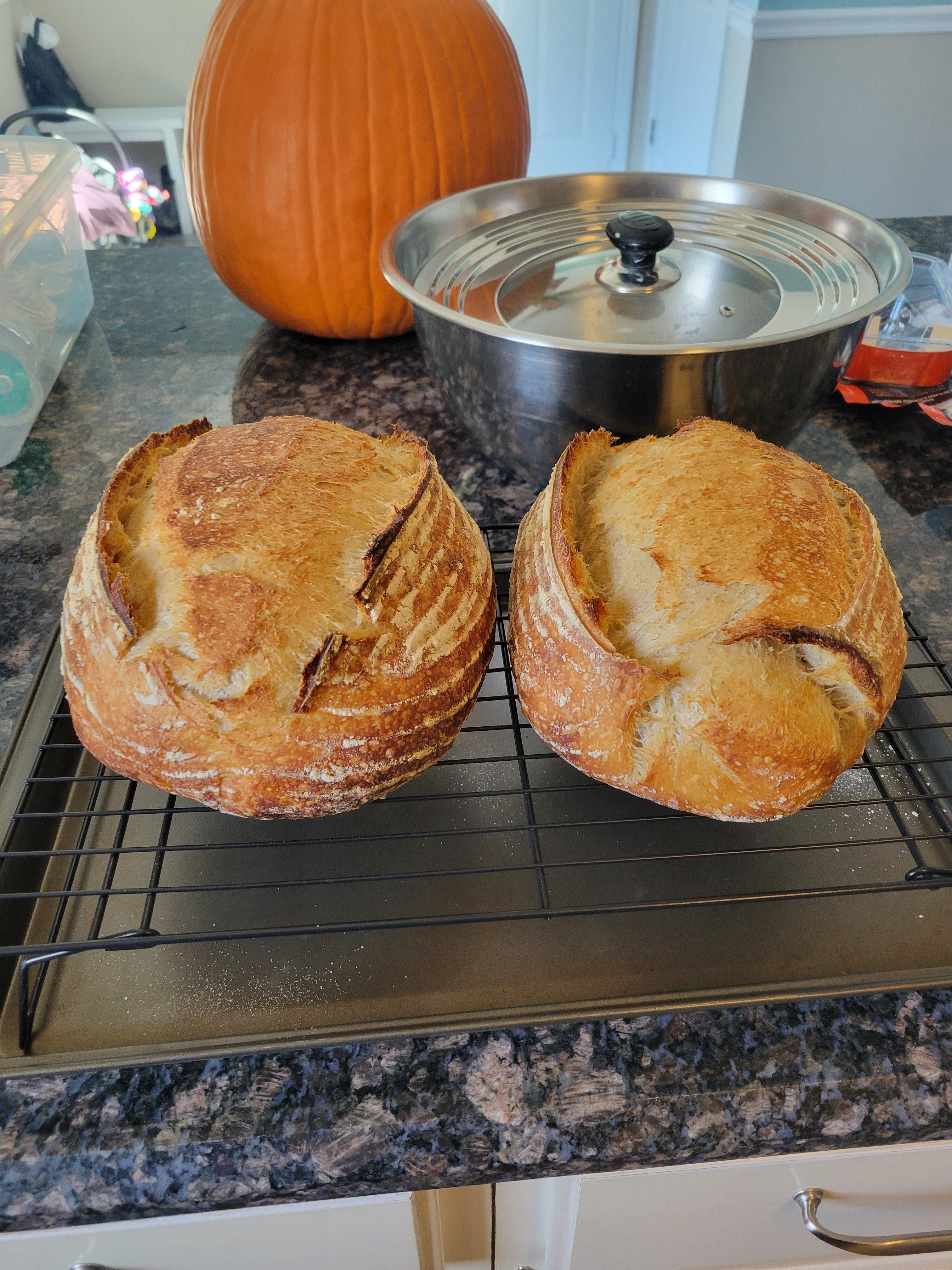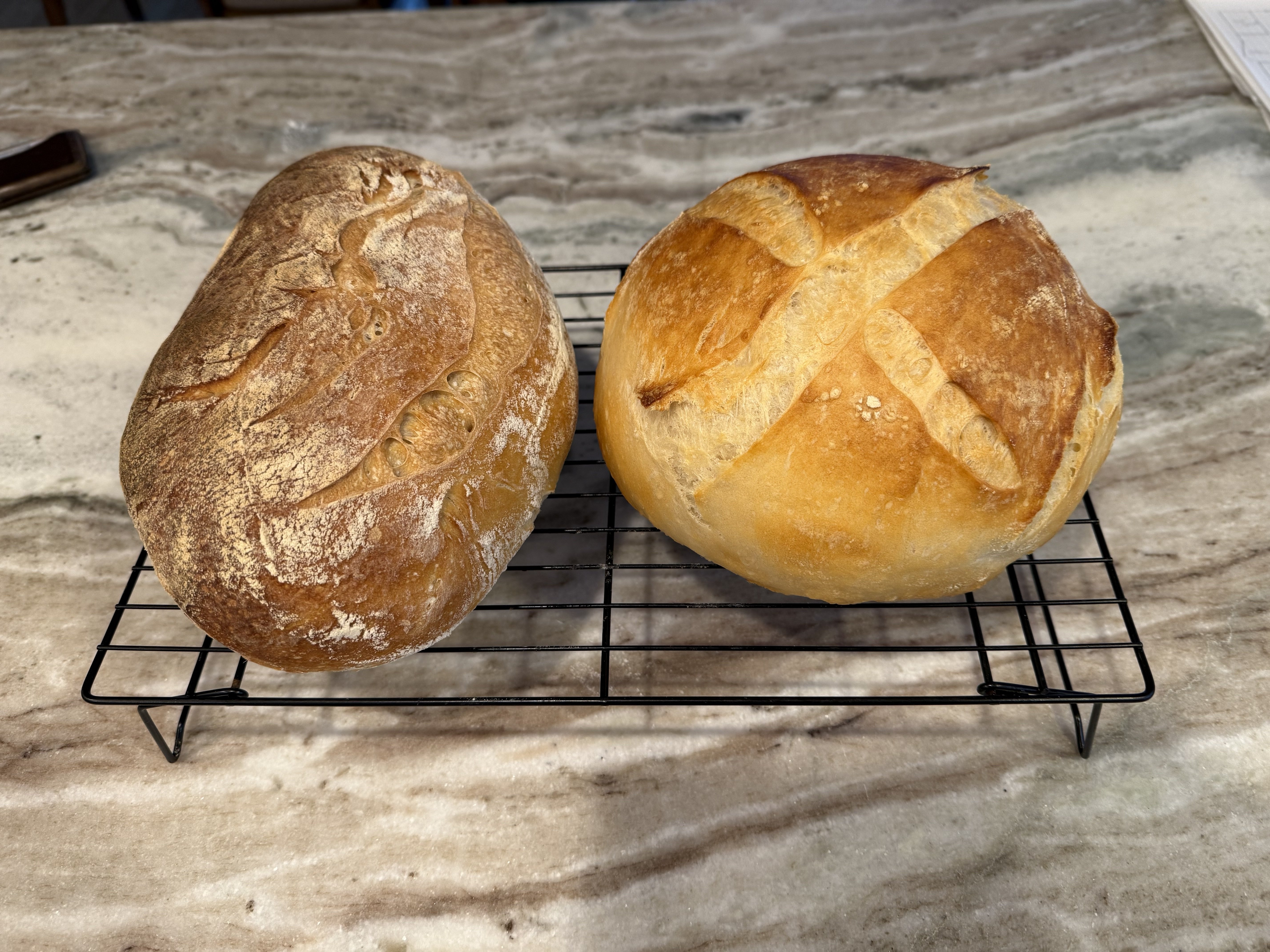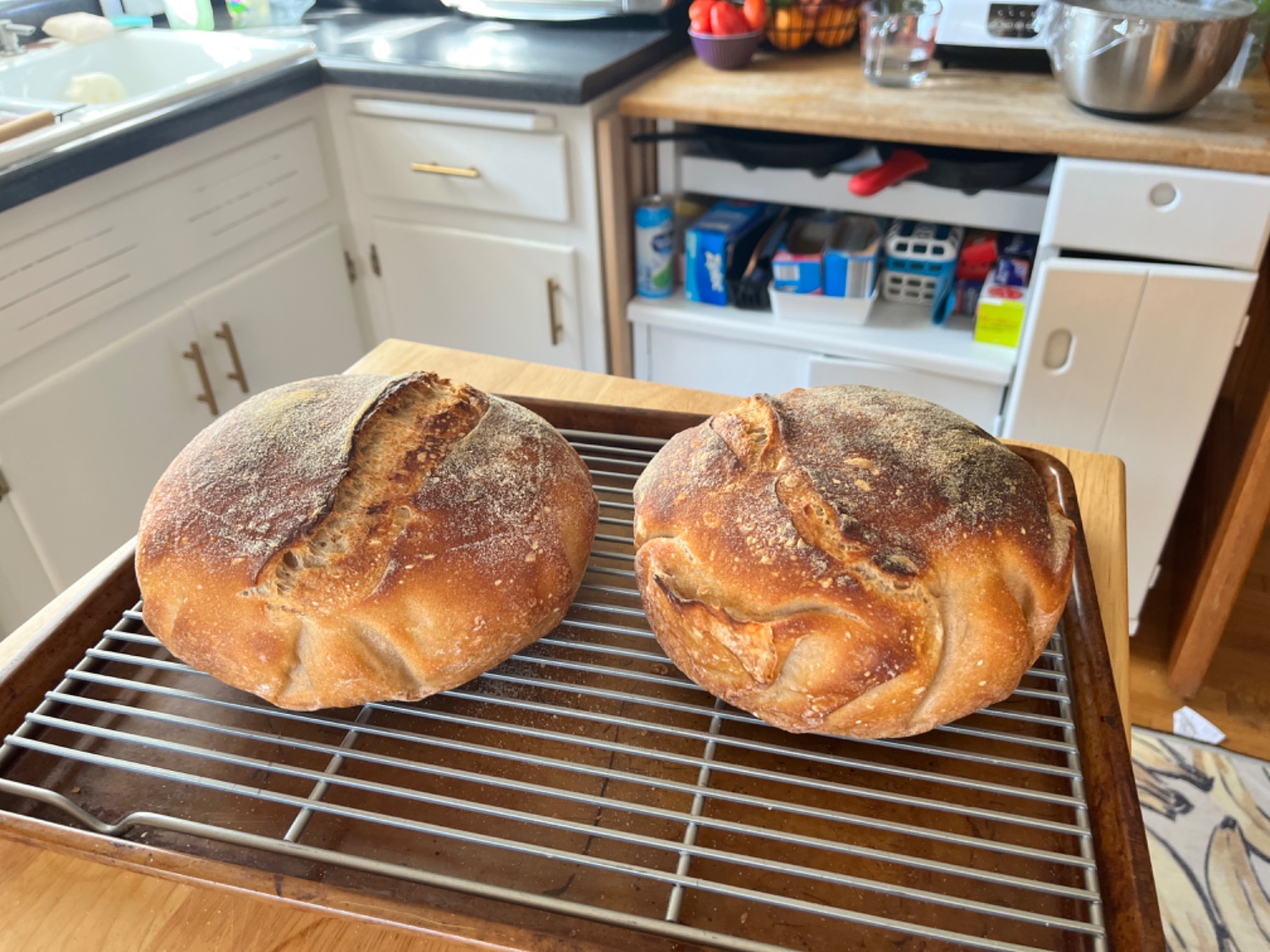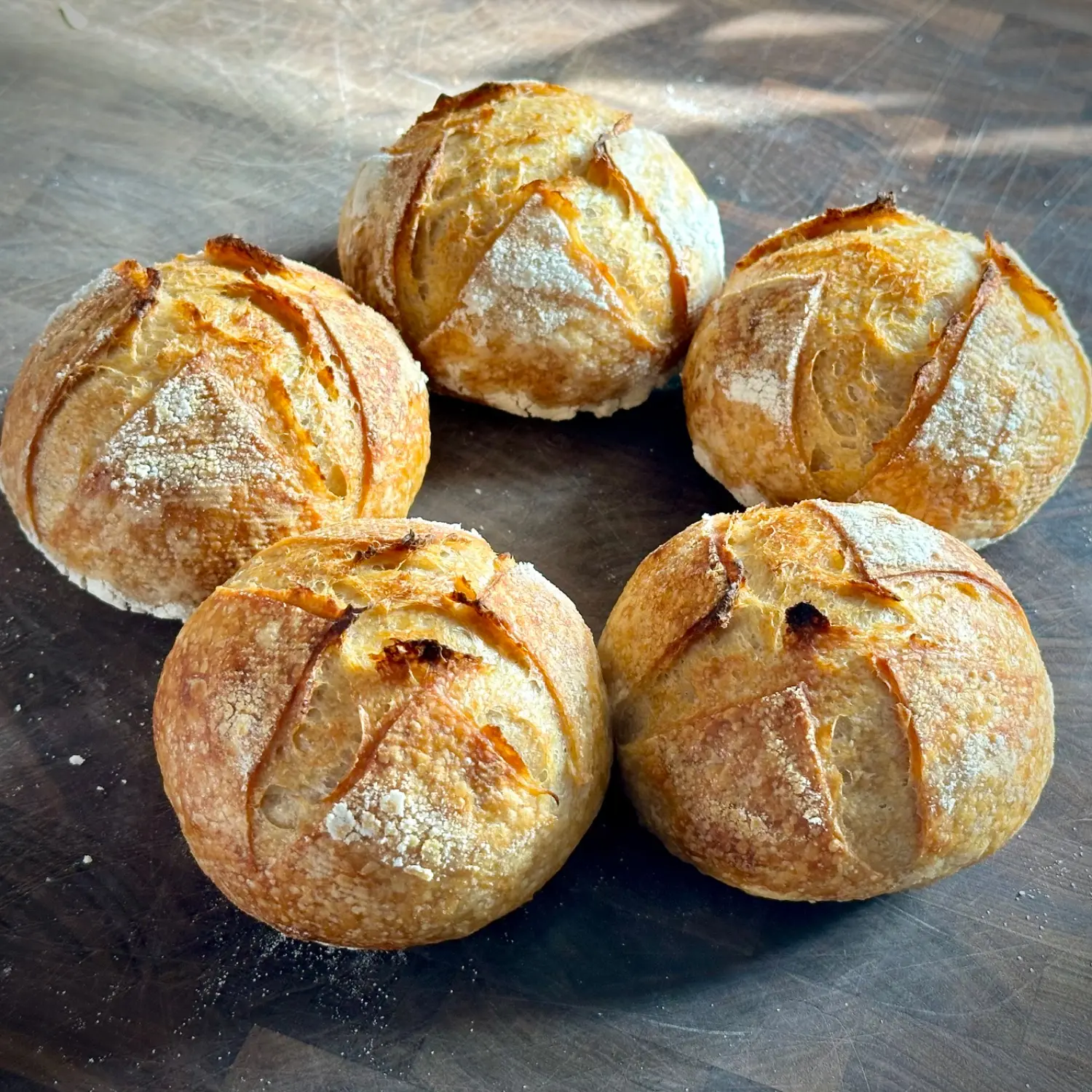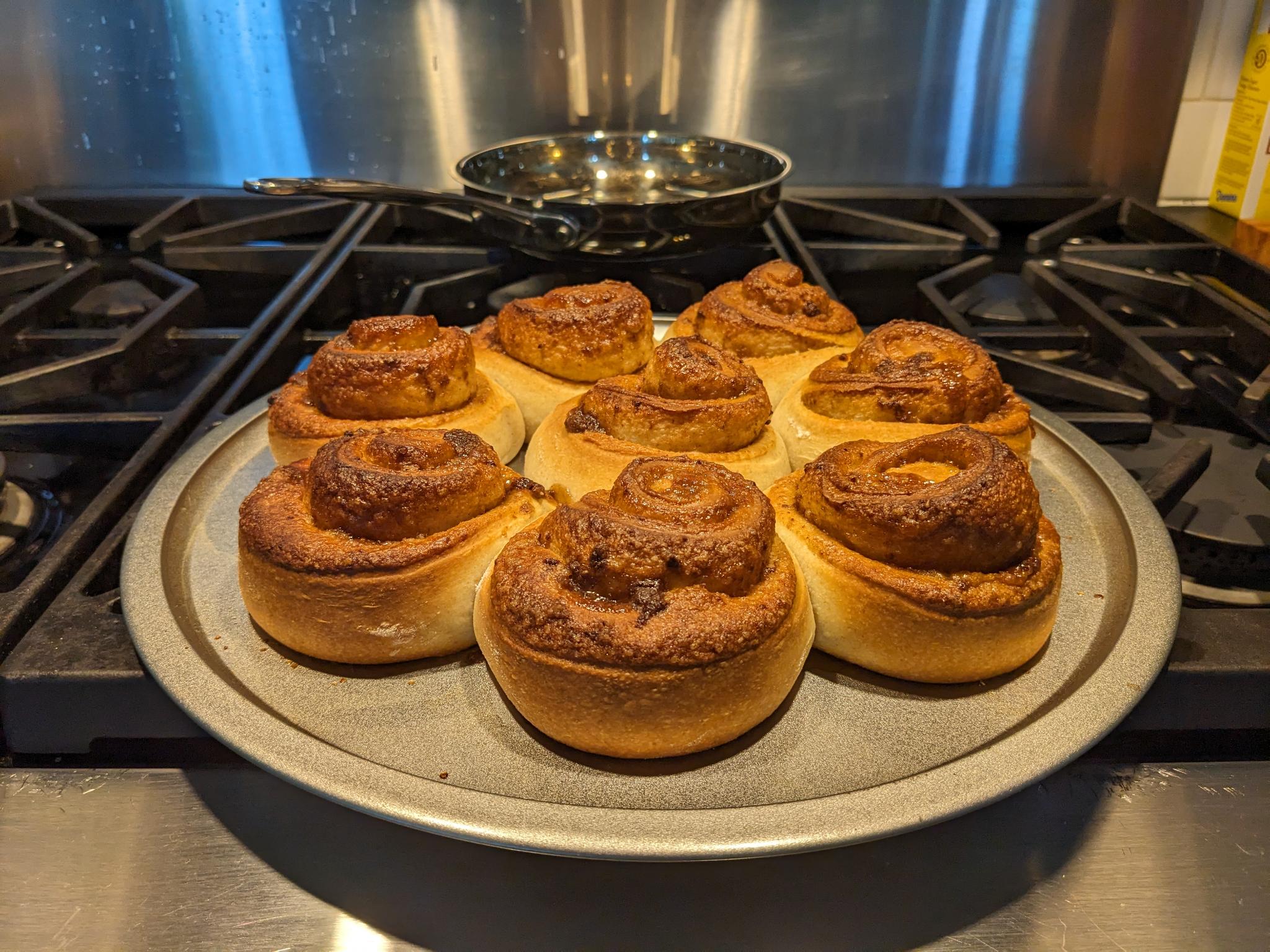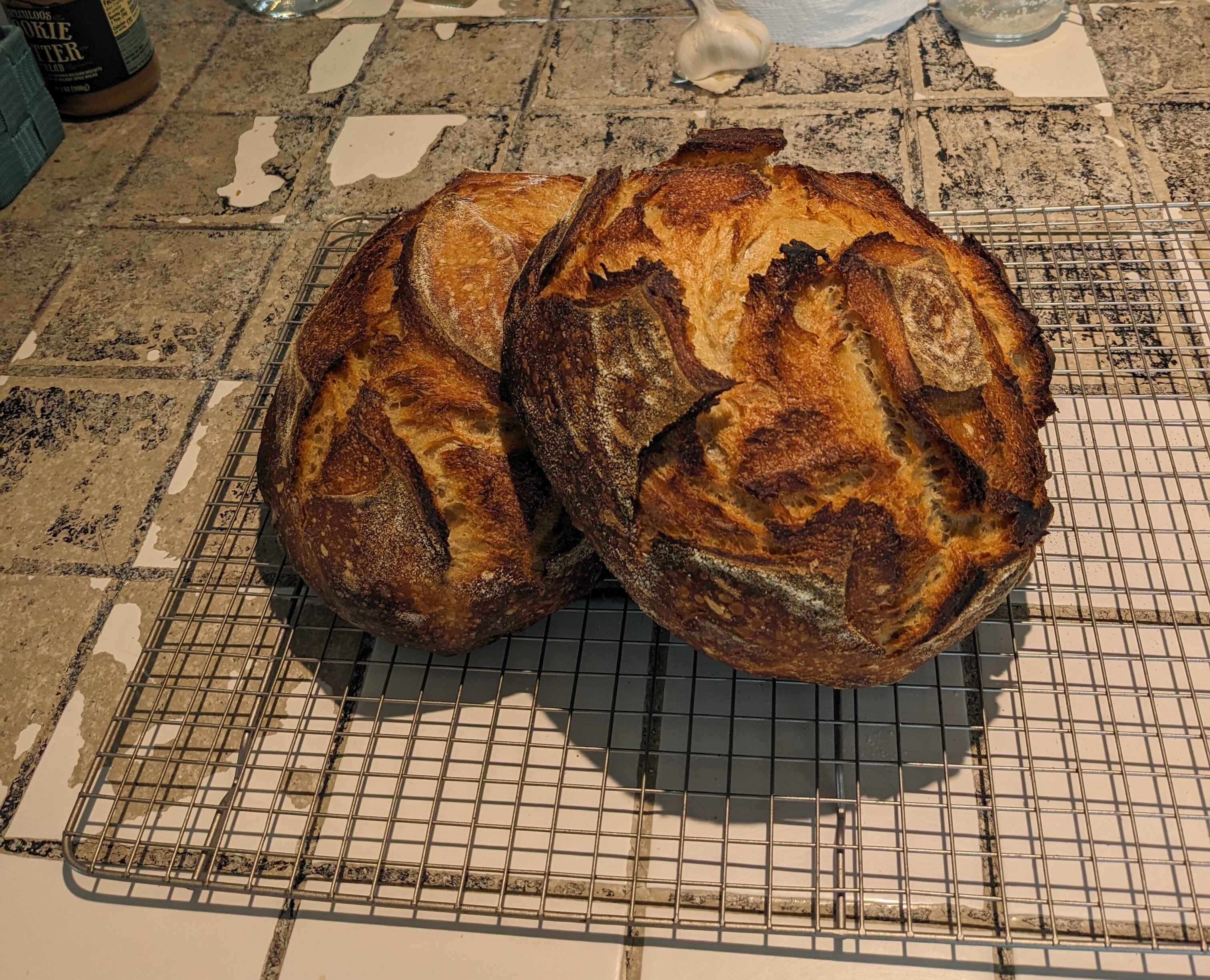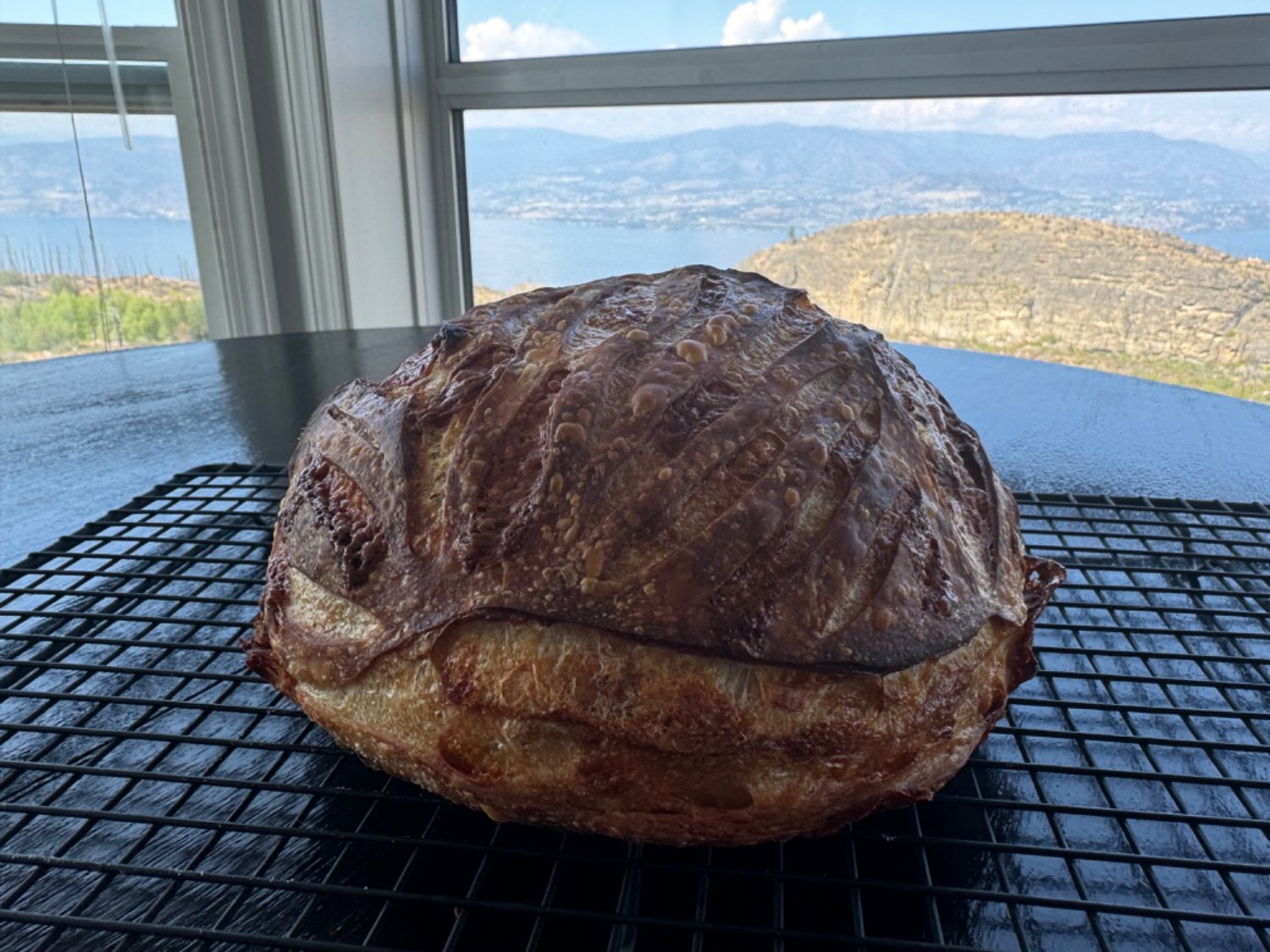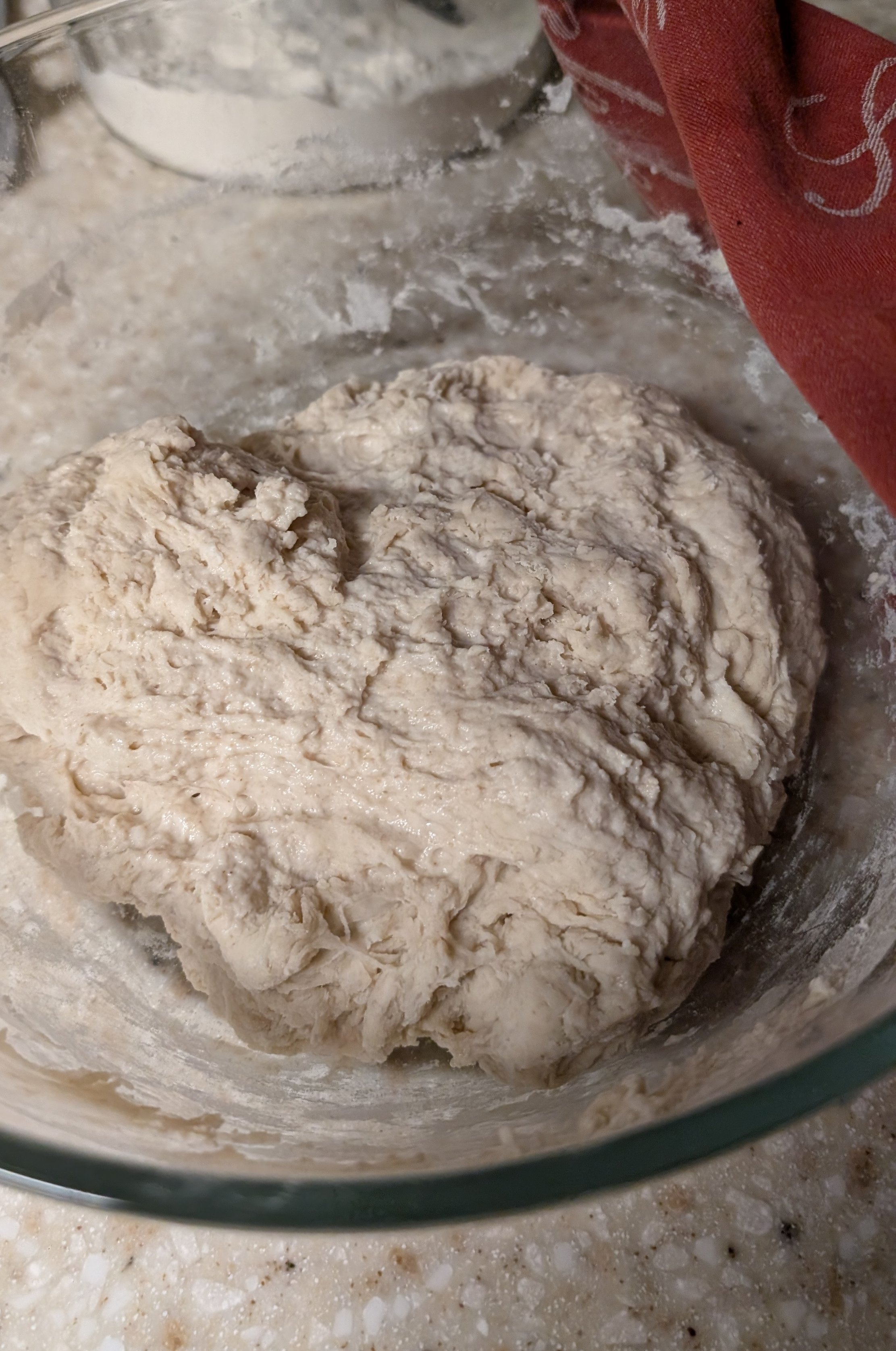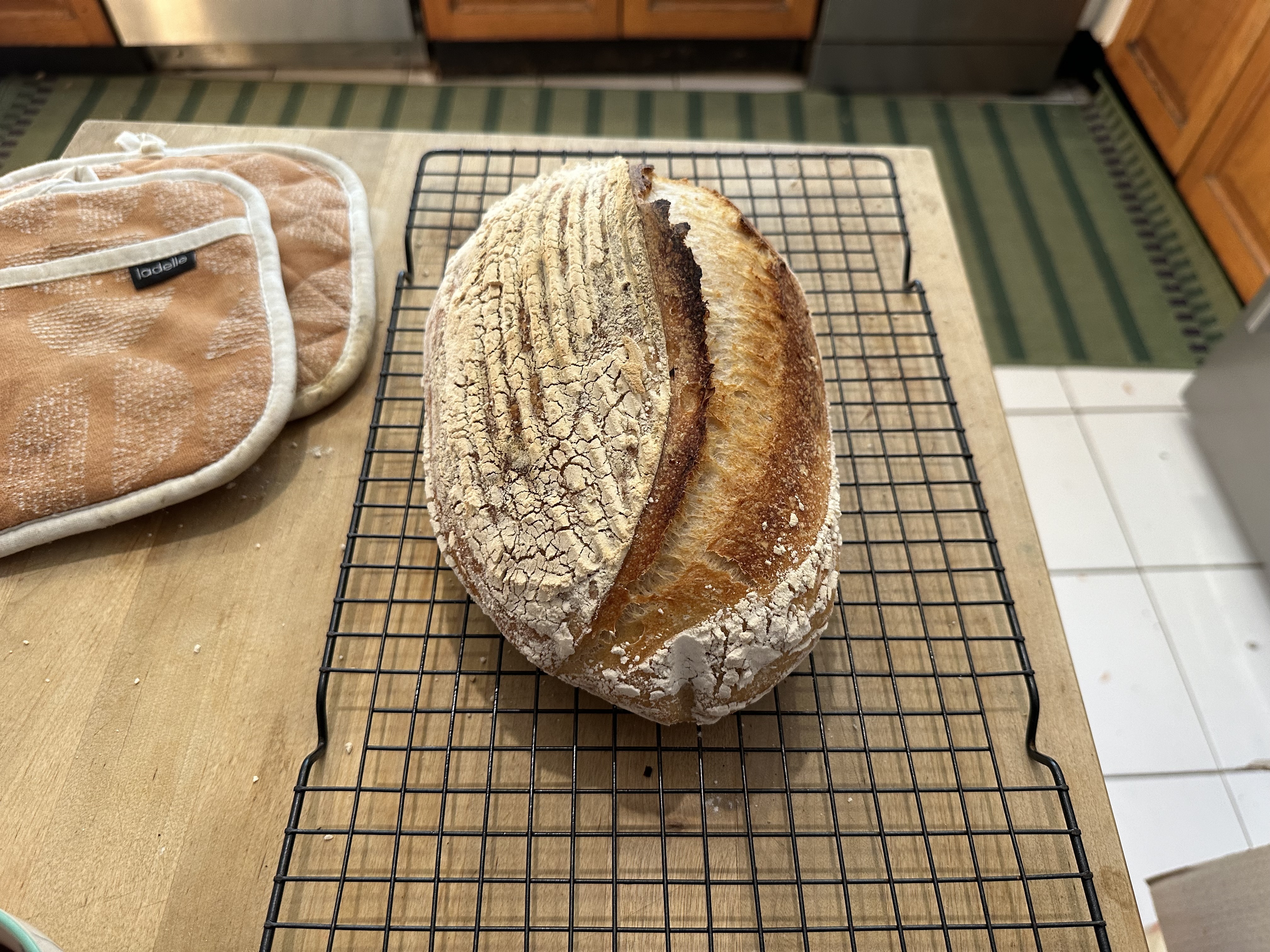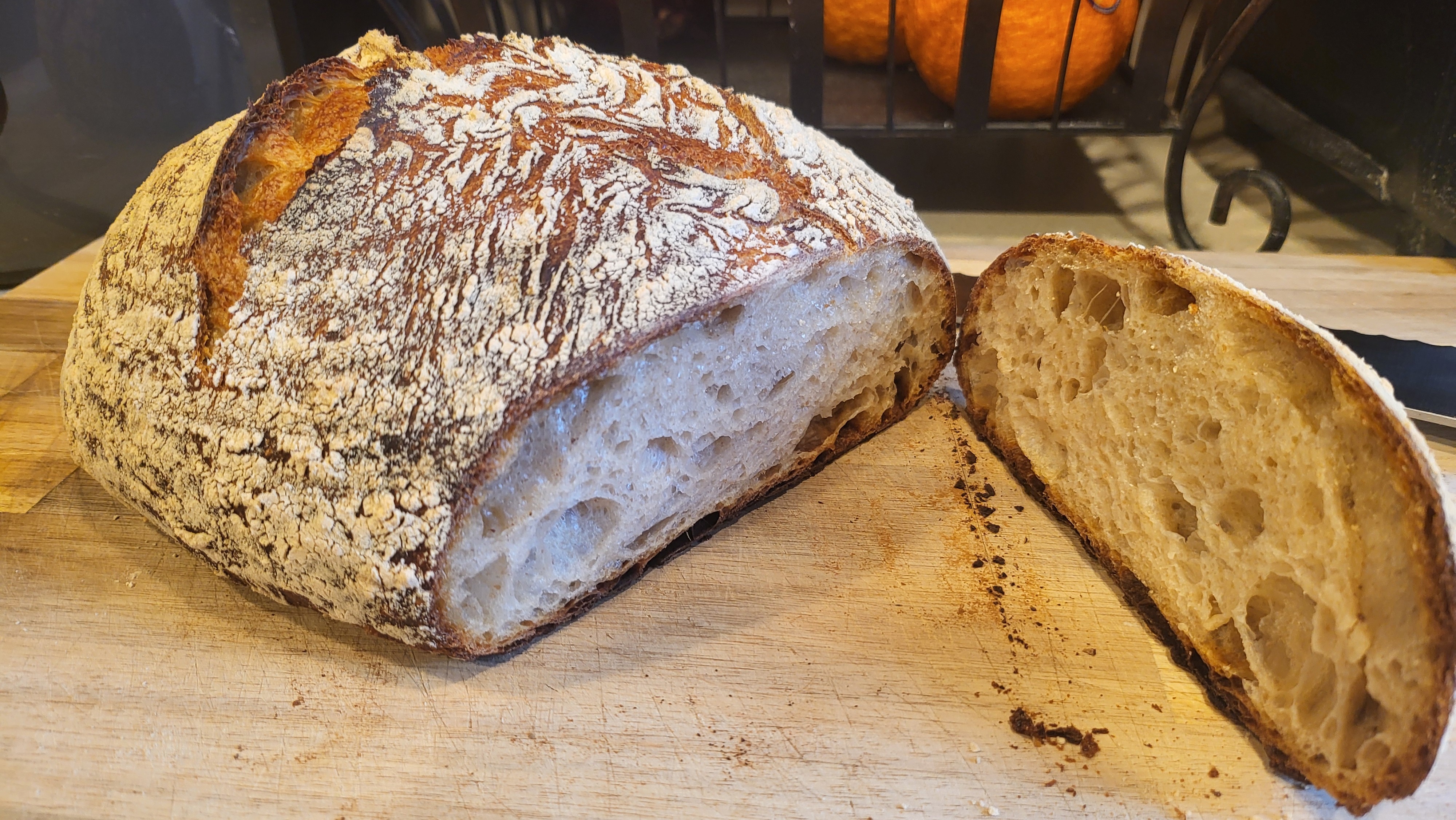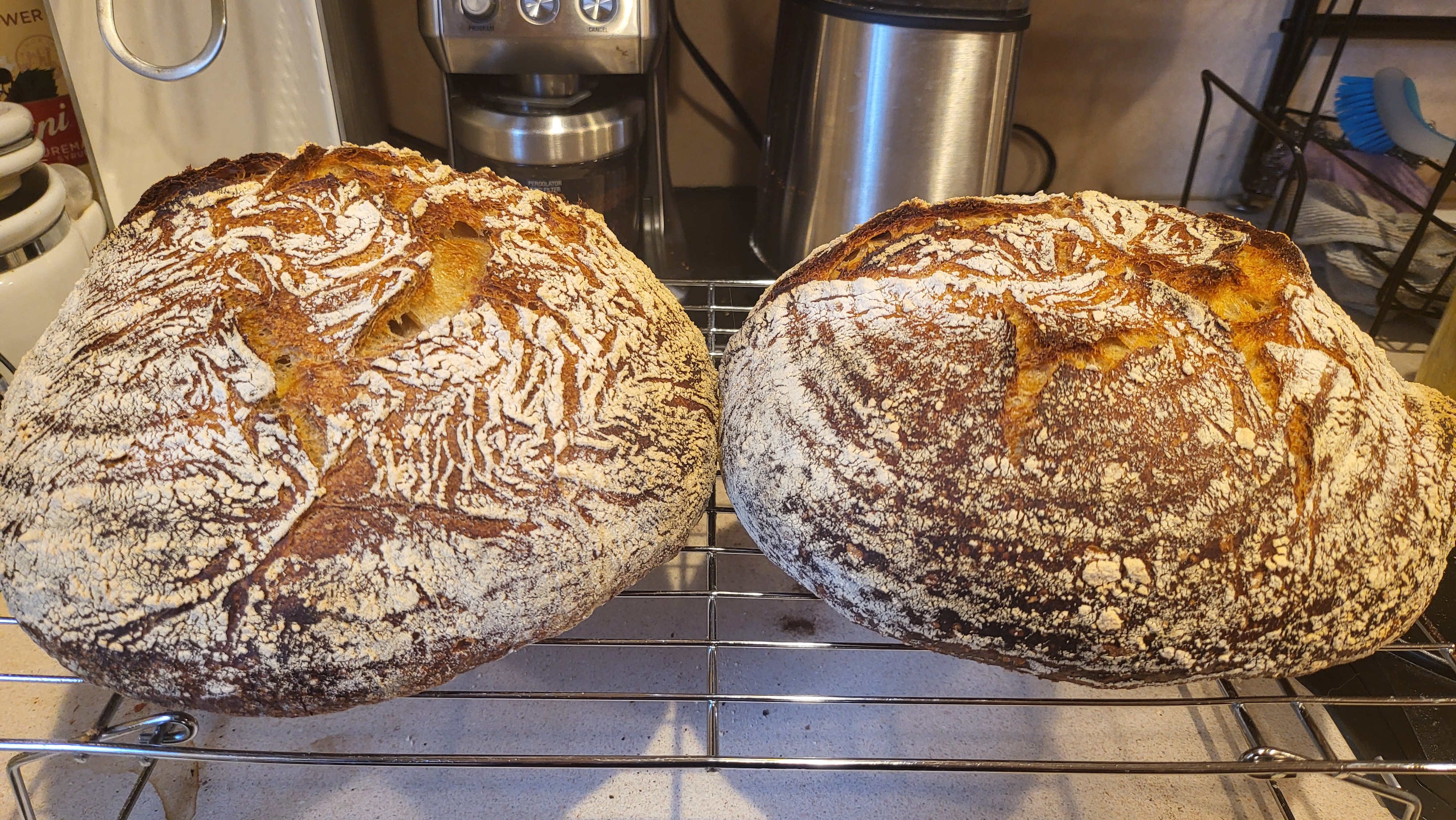I noticed this community hasn’t been active in a while so I thought I’d chime in with my most recent pair of loaves.
I’ve been baking sourdough regularly since the beginning of the year and have managed to land on a recipe I really like. I first tried adding olives to my loaves a couple of months ago and really enjoyed it so I figured I’d do it again; it’s a mix of mostly Castelvetrano and Kalamata olives with some nondescript garlic stuffed olives I wanted to use up. I really like the resulting loaves; I still need to work on my shaping though…
In case anyone is interested, here’s the recipe (for two loaves):
Stats
- Hydration: ~82%
- Dough mass: 908g
Ingredients
- (80%) 720g bread flour
- (10%) 90g sifted whole wheat flour
- (10%) 90g scalded whole wheat flour (2:1 water to flour)
- (80%) 720g water (180g reserved for scalding)
- (20%) 180g starter (1:1, fed with whole wheat or dark rye)
- (1.8%) 16g salt
I came up with the ratios after a lot of trial and error. The hydration is fairly high but the scald makes it surprisingly workable for being above 80%.
The method I use for the scald is I sift all of the bran out of the whole wheat flour, divide the remaining sifted flour in half, then re-add the bran to the half that I’m going to scald. I have never actually tested it but I’ve heard that the bran can interfere with gluten development and scalding it may help in that regard. It might not make a difference, but at this point I’m hesitant to rock the boat since I’m so pleased with the results I’ve been getting.
The rest of the process I go through is pretty standard procedure for sourdough: I feed my starter out of the fridge a couple of times prior to the day I make the dough, do a short autolyse, combine the starter and salt, do some stretch and folds, bulk ferment, preshape, and shape. One thing that makes a huge difference for me is the cold proof - I’ve tried both ways and every time I get better oven spring and better flavor when I let the dough sit covered in the fridge anywhere from overnight to 24 hours.
A few other thoughts…
I probably do more sets of stretch and folds than normal (maybe 5 or 6 spaced 30 minutes apart). I’m guessing here but I think that might be leaving me with a more uniform crumb by better distributing the fermentation sites (which I prefer). Also, I find that I have to go longer in bulk than a lot of people seem to (maybe 7 hours with an ambient temperature of 78F).
My biggest blunders at the beginning of my sourdough journey were not fermenting the dough long enough. My rule of thumb at this point is to let the dough ferment until it has gained 50 to 70 percent in volume, and when you gently shake the container the dough “wobbles.” I always give the final shaped loaves another hour or so at room temp before putting them in the fridge to extend the ferment a bit longer.
One of the best things about the resulting bread is how stable it is just sitting out at room temperature. I’ve made regular white bread with active dry yeast in the past and by day 2 it’s already a shadow of its former self, and day 3 or 4 it’s hard and/or moldy. I actually made these loaves 9 days ago at this point and they are still holding up pretty well. They aren’t as soft and nice as they were on day 1 (obviously) but they are still pleasant and showing no signs of mold. I imagine the acidity of the bread helps with the mold, and from my own tests the scald seems to be what really helps the bread maintain its freshness over time and not dry out. If you’ve never tried a scald before, I’d absolutely recommend it.
